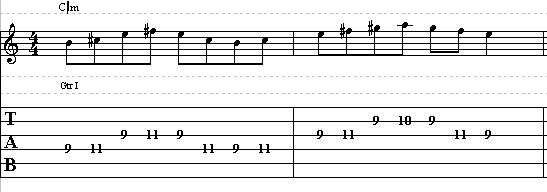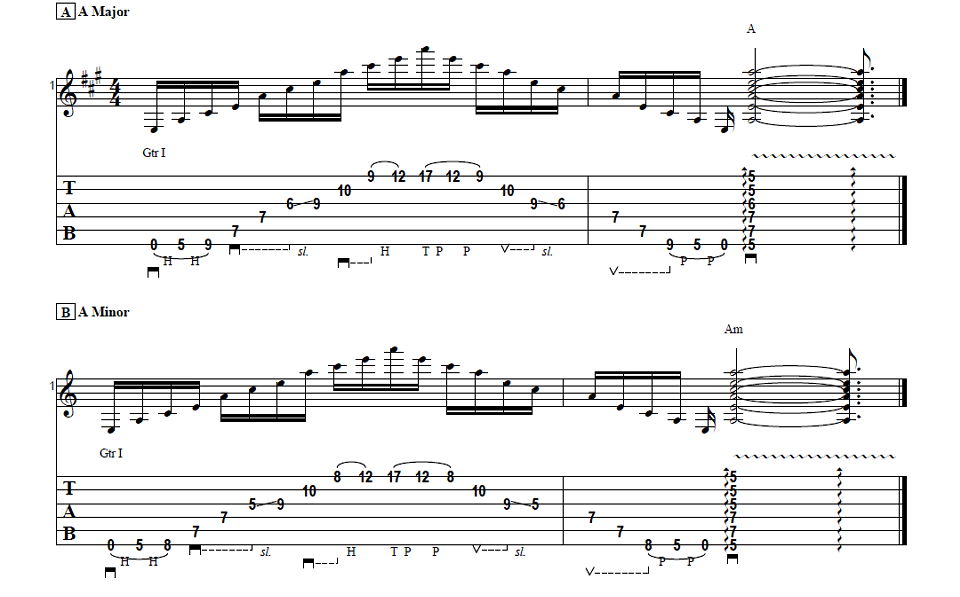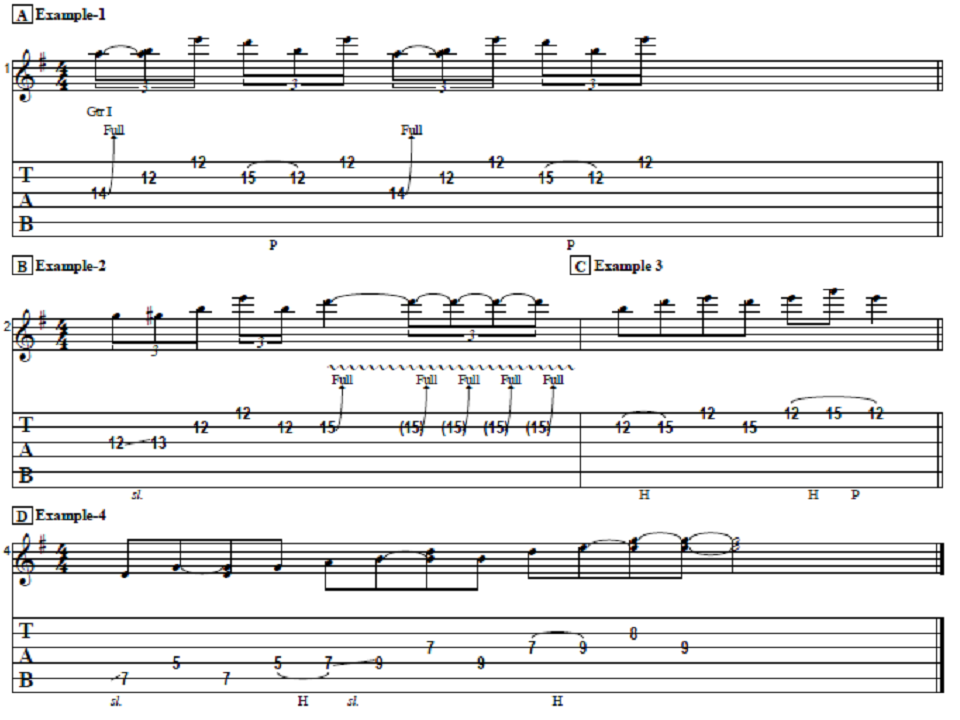Hey, what’s up? I’m Claude Johnson and today’s topic
is double stops. So a double stop is a two-note chord,
instead of a full triad, three-note chord. You’re just
going to have a small chord with just two notes.
So one easy way — I always like to start with the
pentatonic scale. We’re up here on the 5th fret,
the 7th fret, there’s our little A-minor pentatonic
box. One easy thing to do is just replace those
single-note lines with double stops.
Any lick that we play we can kind of replace it with
a double stop lick. Now, when we’re inside the
pentatonic scale, there’s basically three things we
can do. One double stop is — like we can go up three
notes. So 7th fret of the D string, which is an A.
Just go up three notes on the scale. That note is a D.
We’re going to add that on top of our A, so we have D
and the A. There’s our double stop.
Another kind of double stop is we can go up four notes
on the pentatonic scale, which would be a fifth interval.
Again, starting at our root, our A, let’s go up four.
Notice I didn’t go up here, because we sort of want to
be on two adjacent strings. Instead of this, we do this.
This is the next kind of double stop. Really, this is
like a power chord or a five chord.
Finally, we can go up just two notes. You can do this
any way that feels comfortable. You can use one finger
to hold down two notes or you can fret each string
separately with a different finger. Now, with the right
hand, you can either just do a downstroke straight down
on two strings, like the D and G string. Or, you can pick
down and use another finger to pluck. So I can pick the
D string, holding the pick between my thumb and first finger,
then use my middle finger to pluck upward on the G string,
which I think has a nicer sound.
Anyway, back to the double stops. This first kind is great
for blues-y licks. The next kind is just great for power riffs.
And the third kind is kind of good for blues-y riffs.
Hey, thanks for being with me today and I will catch you on
the flip side.


